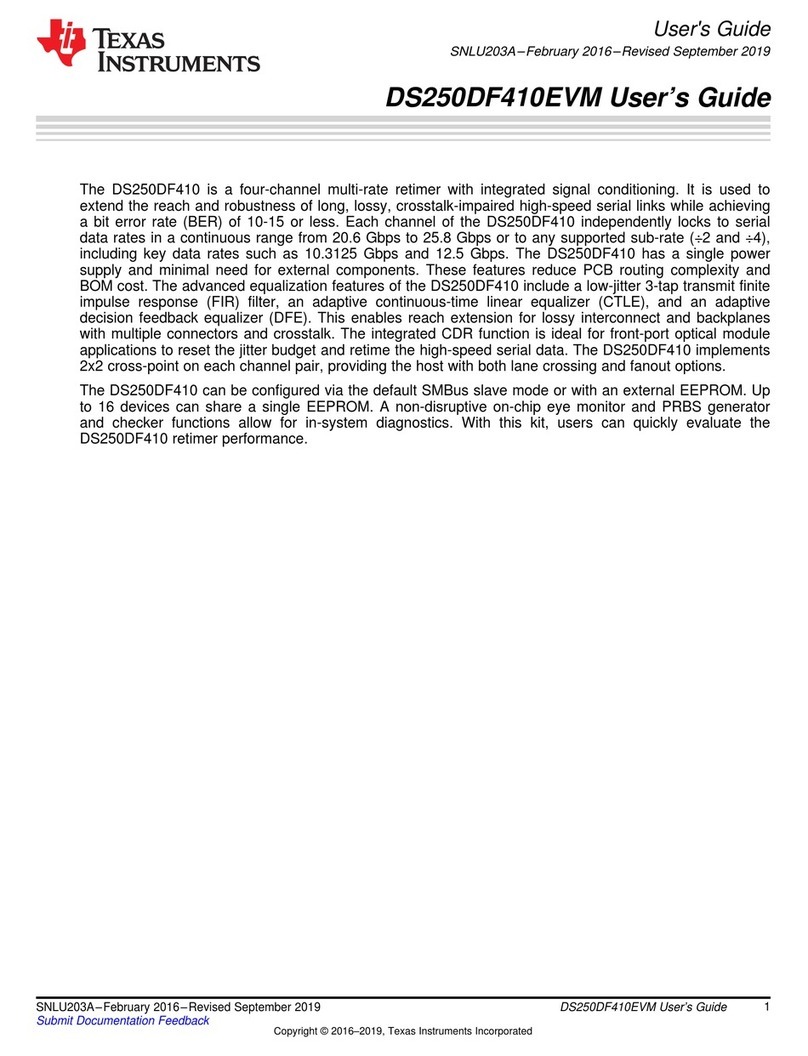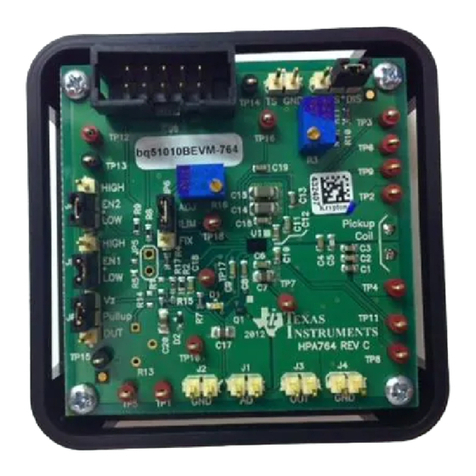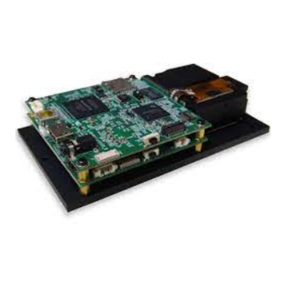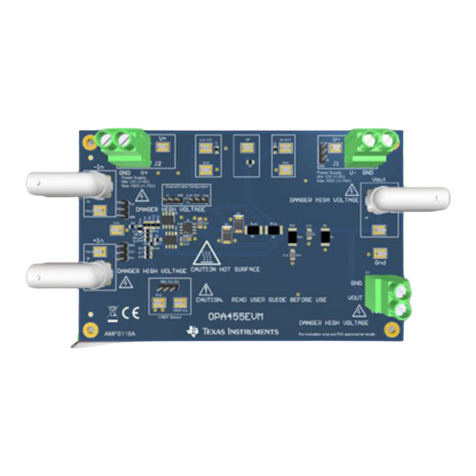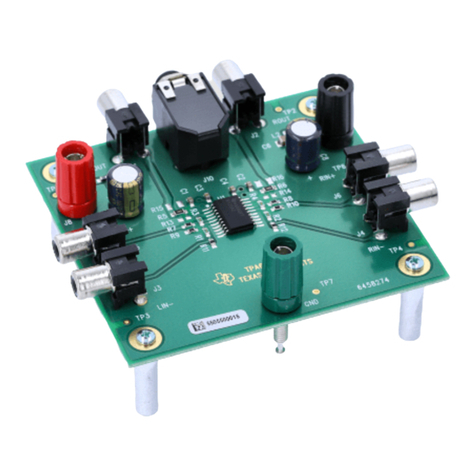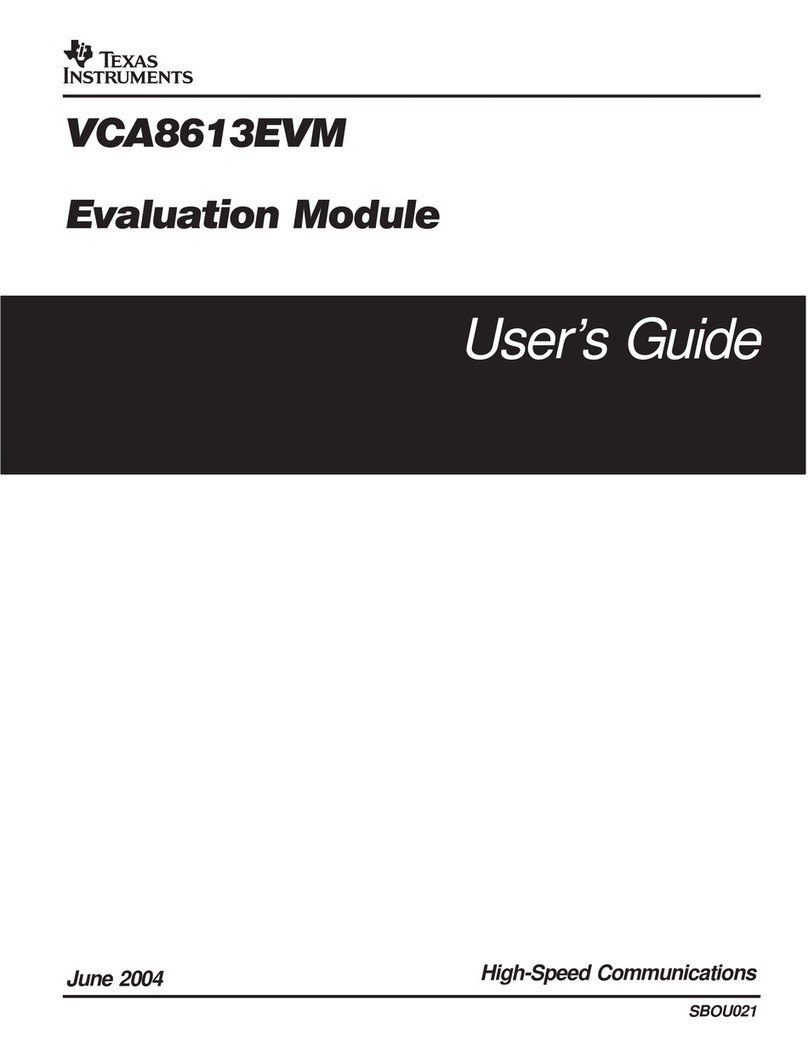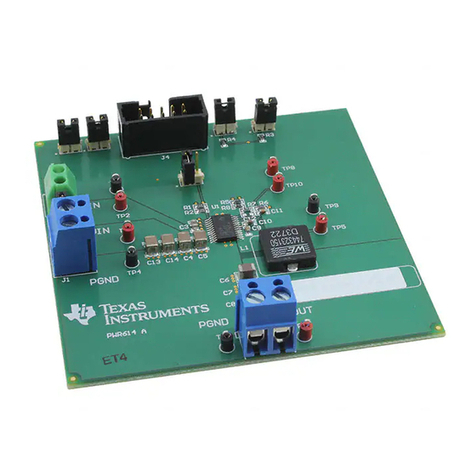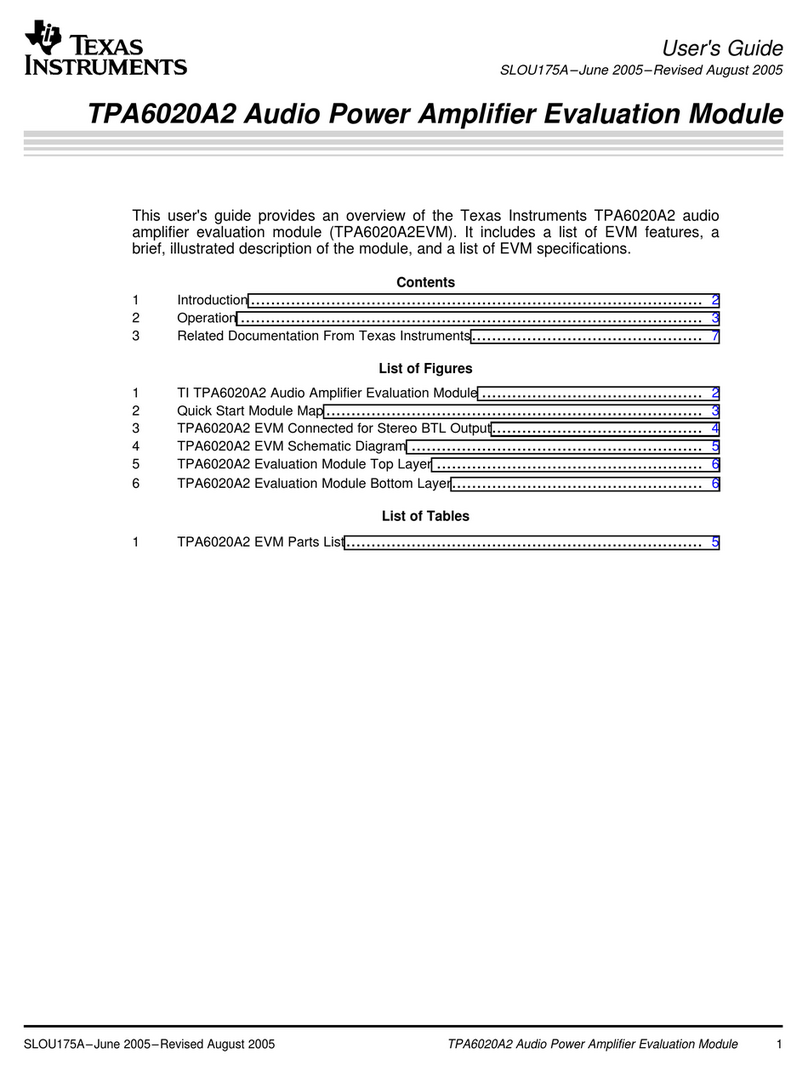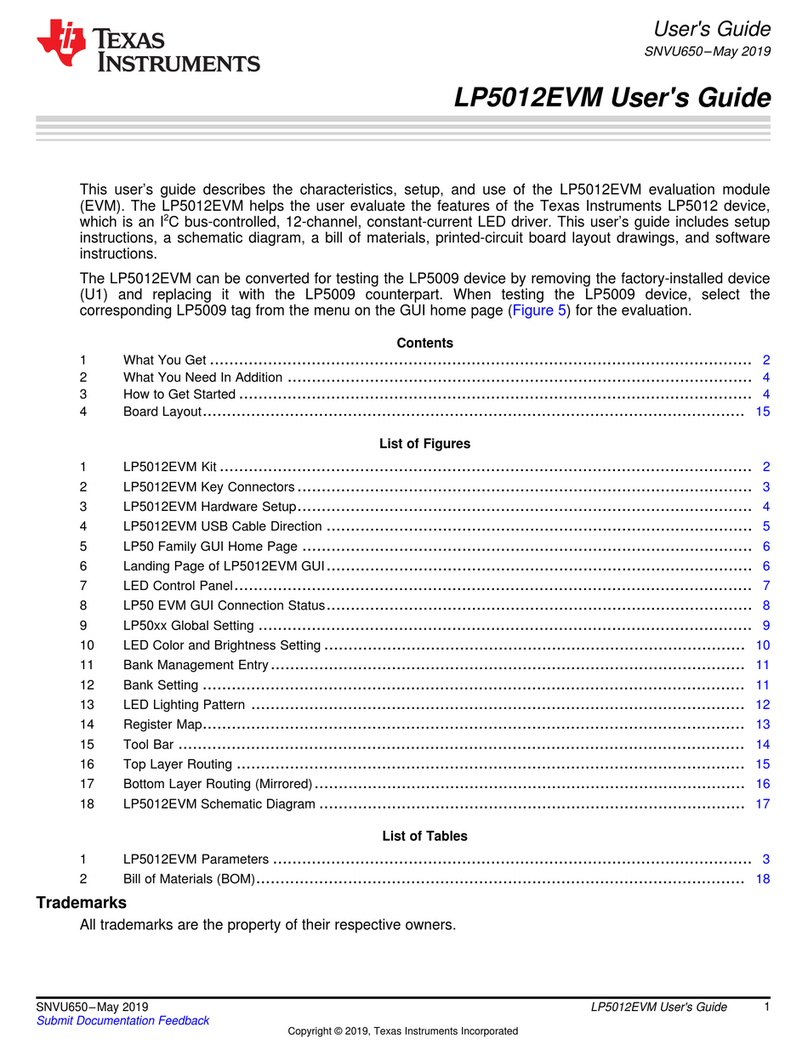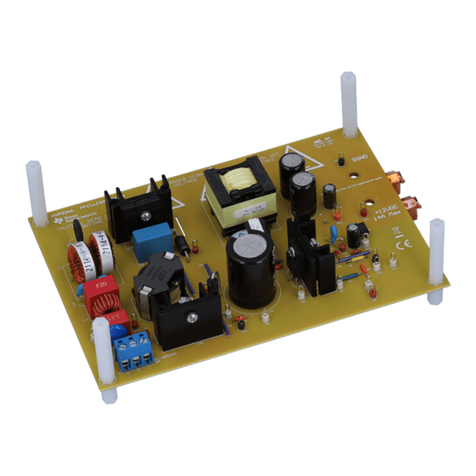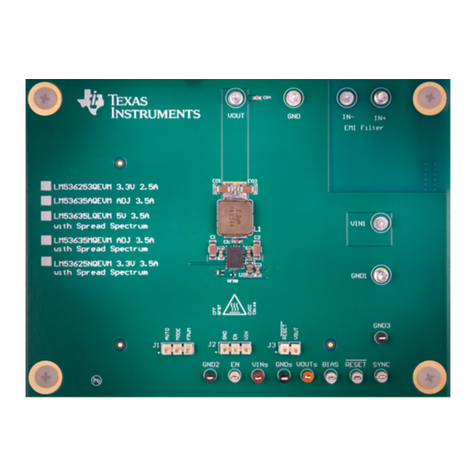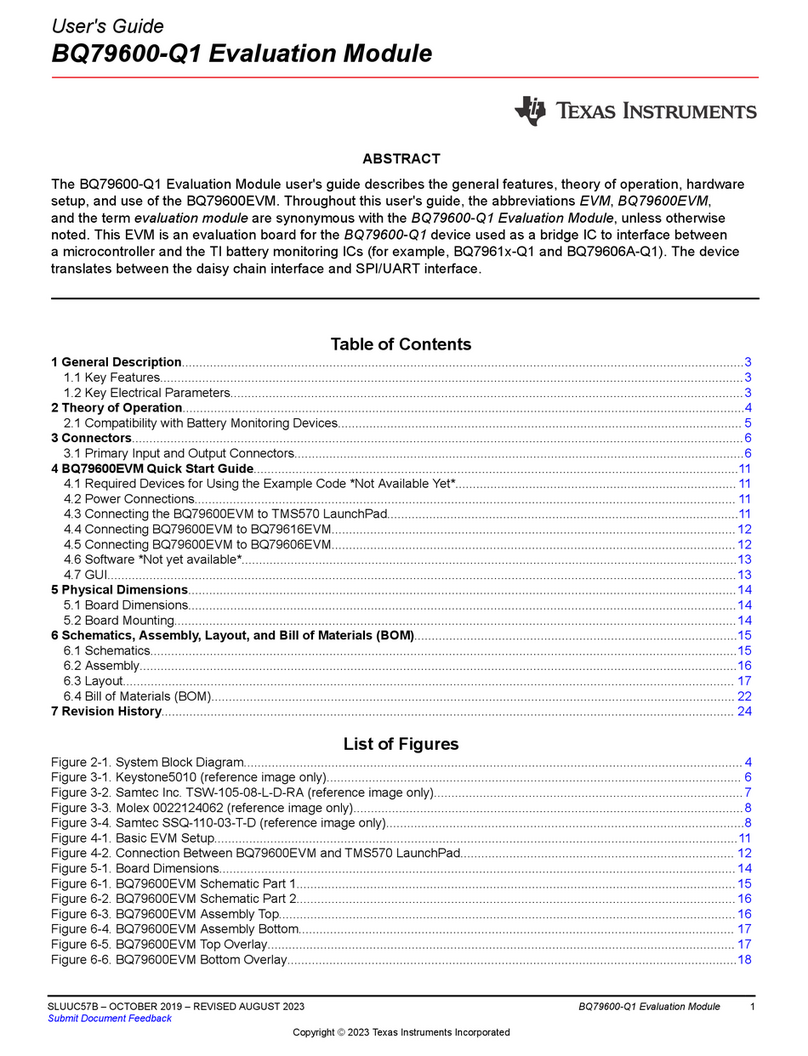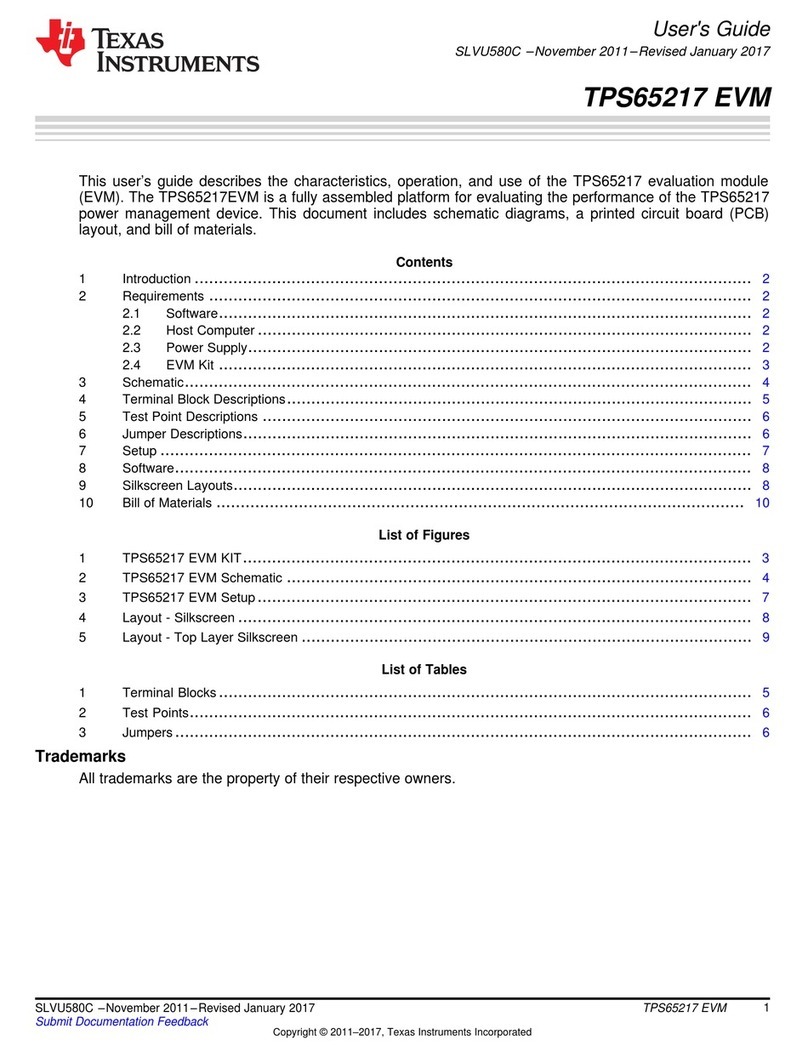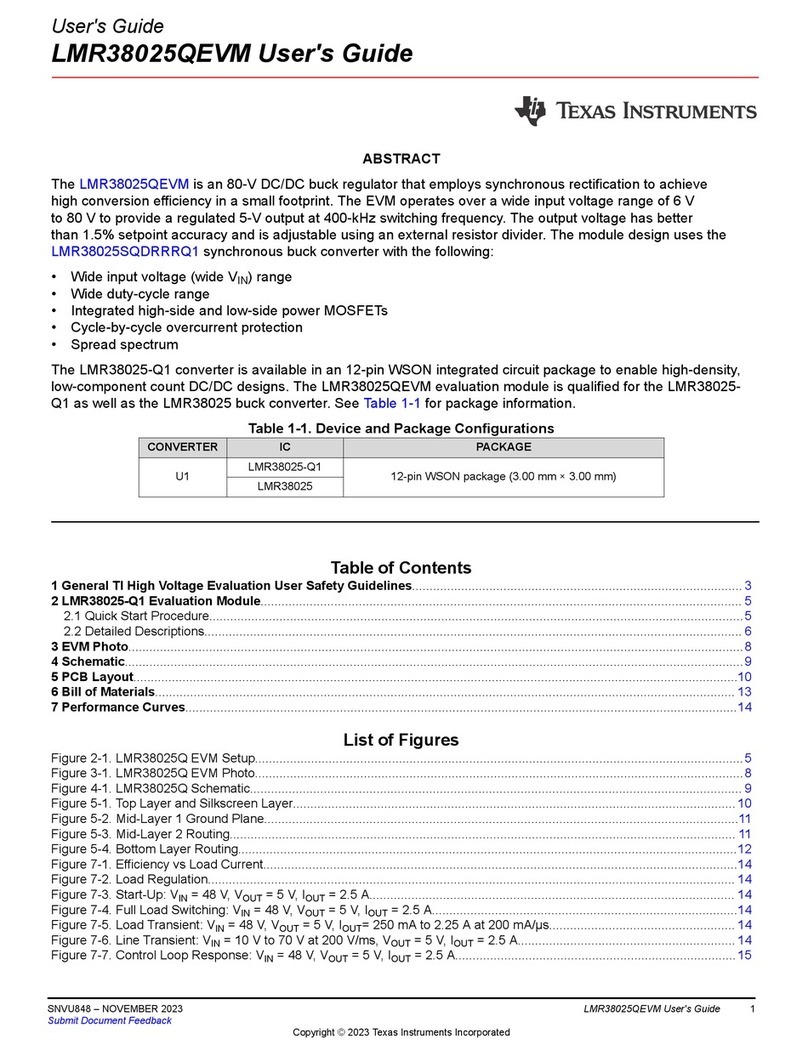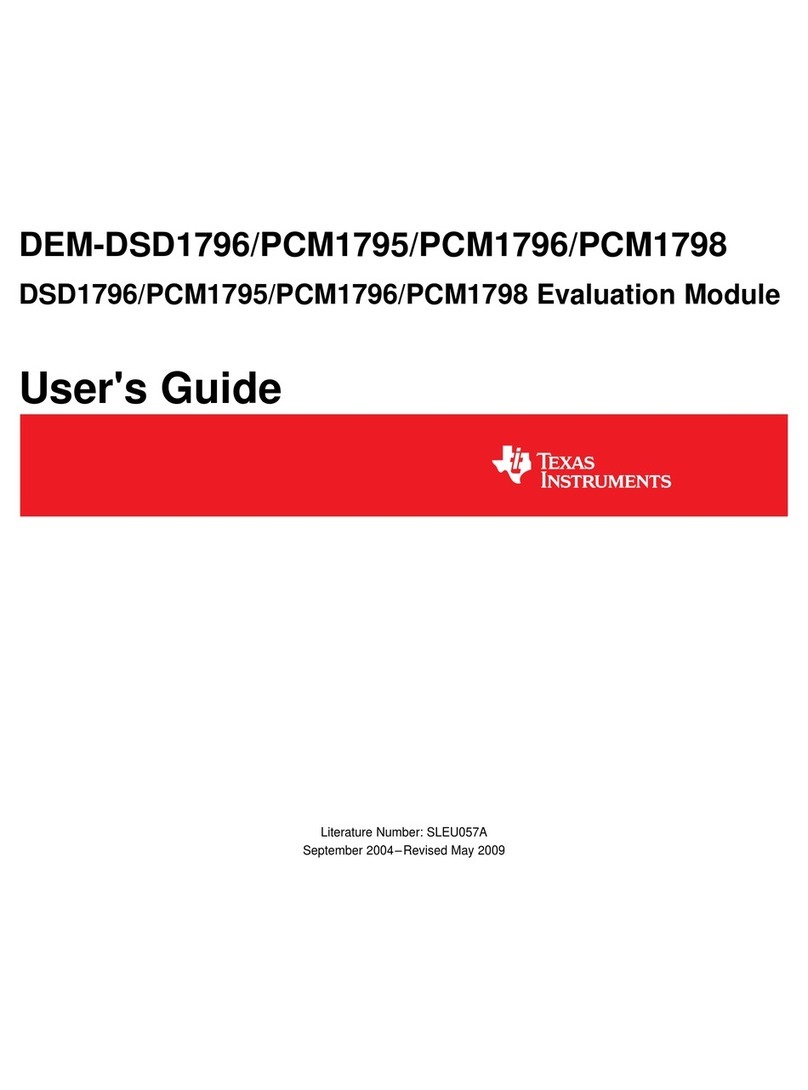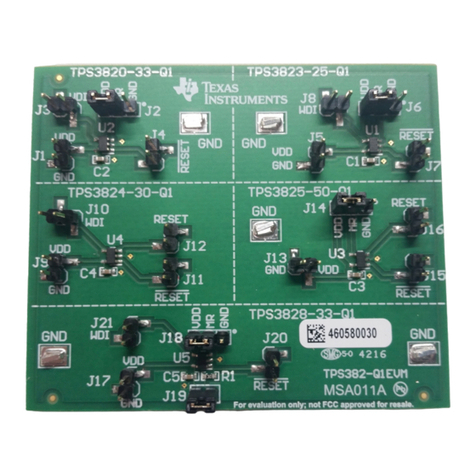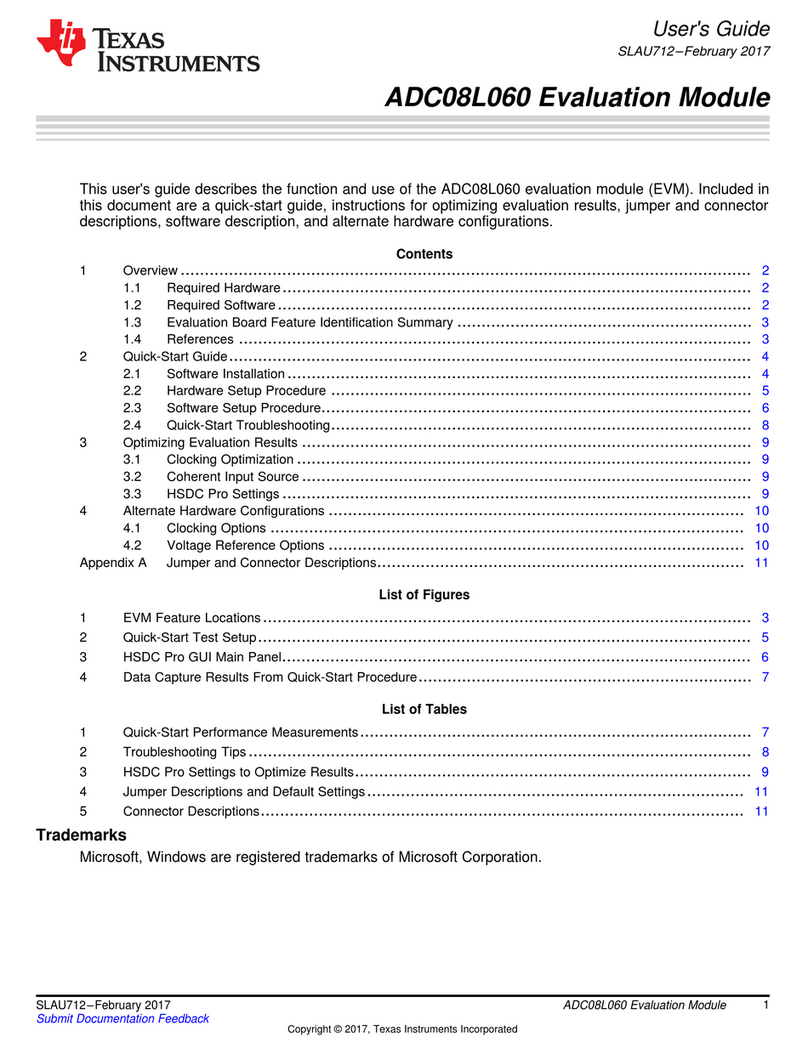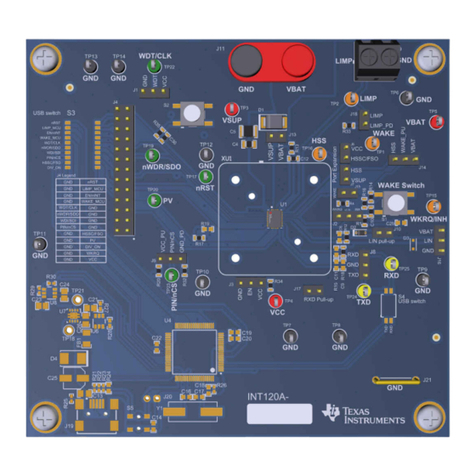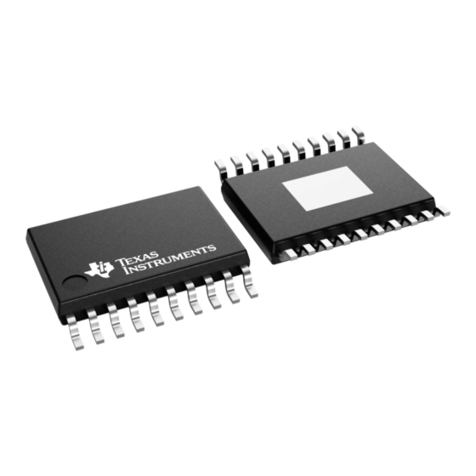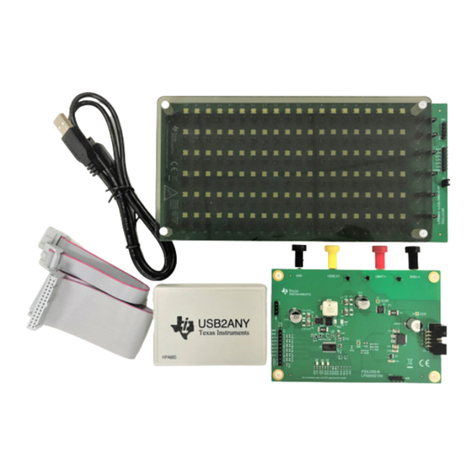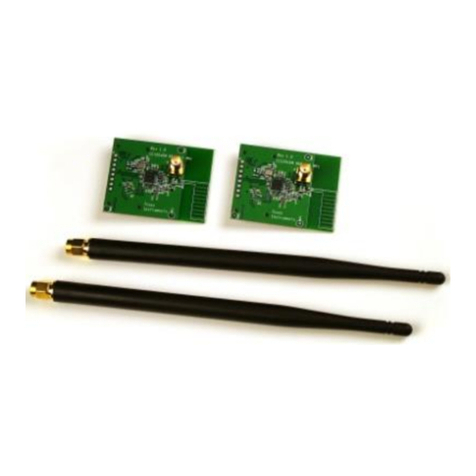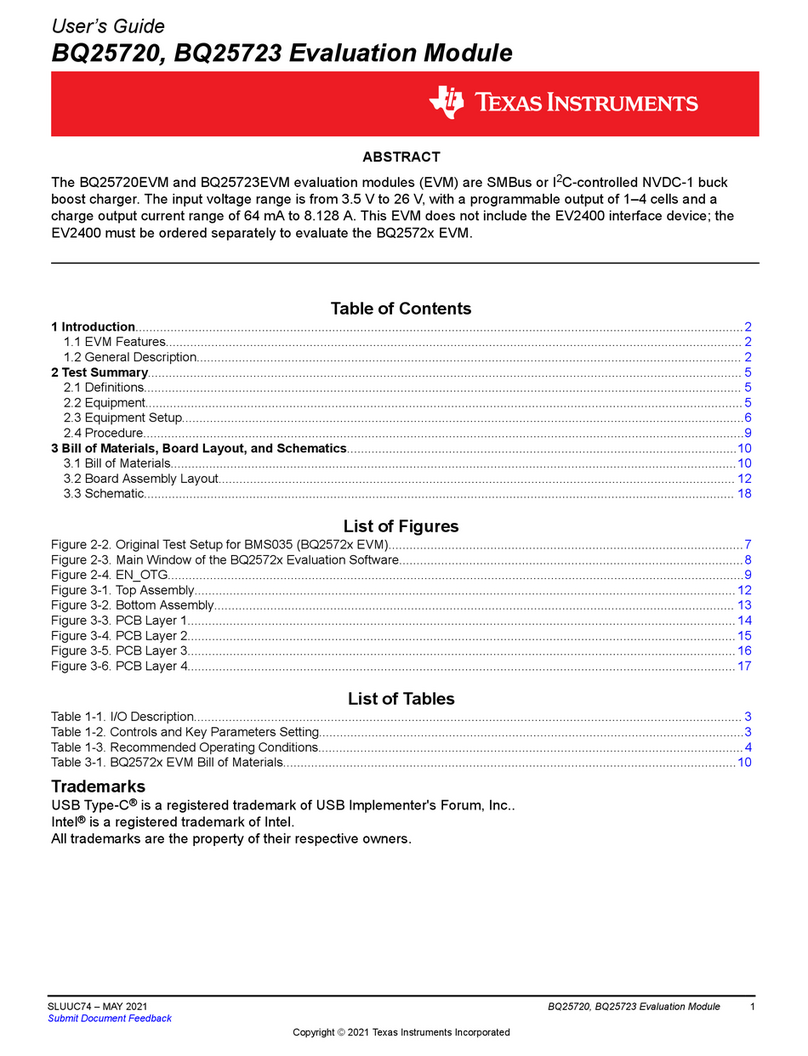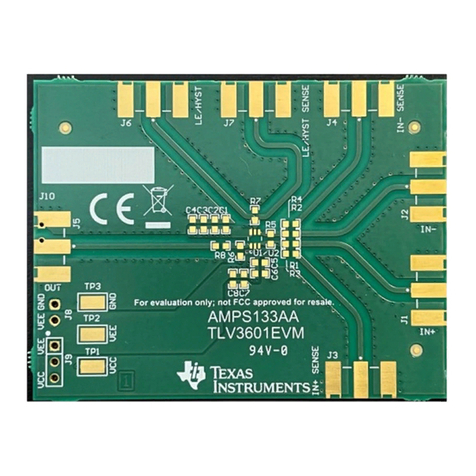
1 Evaluation Module Overview
1.1 Introduction
The ADS1278EVM-PDK is a platform for evaluating the performance of the ADS1278, a 24-bit, 8-channel,
simultaneous sampling delta-sigma ADC. The evaluation kit includes the ADS1278 EVM board and the precision
host interface (PHI) controller board that enables the accompanying computer software to communicate with the
ADC over the USB for data capture and analysis. The ADS1278 EVM board includes the ADS1278 and all the
peripheral analog circuits and components required to evaluate the performance of the ADS1278. The PHI board
provides a communication interface from the ADS1278 EVM to the computer through a USB port.
This user's guide includes complete circuit descriptions, schematic diagrams, and a bill of materials. Throughout
this document, the abbreviation EVM and the term evaluation module are synonymous with the ADS1278 EVM.
Note
The ADS1278 EVM and software can also support the 4-channel ADS1274 device. However, the user
must manually remove the ADS1278 and install the ADS1274. See Section 4.2 for the location of the
ADS1278 on the EVM. The ADS1274 is not discussed further in this document.
1.2 Kit Contents
The ADS1278EVM-PDK includes:
1. The PHI controller board.
2. The ADS1278 EVM board which includes the ADS1278 and peripheral circuitry required for device operation
and communication with the PHI board.
3. An A-to-Micro-B USB cable for communication between the PHI board and the EVM GUI.
4. The EVM GUI, which can be found online in the EVM tool folder.
1.3 Specification
The ADS1278EVM-PDK uses three different input structure designs to allow for easy evaluation of the ADS1278
performance. The first two channels enable differential measurements using SubMiniature A (SMA) connectors,
the second two channels enable single-ended measurements using a single SMA connector each, and the
remaining four channels are routed to pin headers that can be used to input differential signals. Fully-differential
amplifier circuits drive the first four channels, while the remaining four channels are connected directly to the
ADS1278 through an input filter.
The EVM requires an external 6V power source to power three ultra-low noise TPS7A4700 low-dropout (LDO)
linear regulators that supply the ADS1278 voltage rails. The EVM supports the use of an external clock, as well
as setting the MODE, FORMAT, and CLKDIV pins with jumpers.
The EVM can also be configured by populating and depopulating the appropriate pin headers and zero-ohm
jumper resistors to manually measure or set the Vcm, Vref, and shutdown pins of the ADS1278 EVM.
Control and monitoring of the communications between the EVM and the PHI controller board is provided using
the pin header test points. Likewise, monitoring the analog input signals and power supply rails is supported
using the test points built into the board.
Evaluation Module Overview www.ti.com
2ADS1278EVM-PDK Evaluation Module SBAU436 – JANUARY 2024
Submit Document Feedback
Copyright © 2024 Texas Instruments Incorporated
